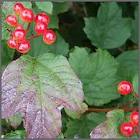Hollyhocks are the flowers that spring into my mind when an “English country garden” is mentioned. My great aunt had them in her garden in Worcestershire along with other typical English garden flowers, meadowsweet, poppies and for some reason a huge passionflower crawled up her door frame. These tall flowers are wonderful for children to play amongst and make for excellent screens in a garden. They attract bees and butterflies too.
 Hollyhocks are members of the Malvaceae family so are related to the mallow and hibiscus. They possess some of the medicinal properties of the Marsh mallow, and have been used as herbs to add to soups and stews, in
Hollyhocks are members of the Malvaceae family so are related to the mallow and hibiscus. They possess some of the medicinal properties of the Marsh mallow, and have been used as herbs to add to soups and stews, in It is best to harvest the flowers in July and August when they are in full bloom and dry them on trays in warm air, at temperatures of 35º Celsius. These can be made into a tisane and used for mouth problems and sore throats.
 It is said that these garden hollyhocks were introduced into
It is said that these garden hollyhocks were introduced into Mediaeval herbalist used them in this remedy for fainting spells or epilepsy perhaps, although it is highly toxic so don’t try it at home! They took hollyhock, wax, fennel, salt and mercury and steeped this mixture in water. This must have been a kill or cure remedy!
Culpeper, writing his Complete herbal in the 17th century had this to say about them: -
 “This species of mallows is of the nature of Common Marsh -mallows, but less mollifying; it is mostly used in gargles for the swelling of the tonsils, and the relaxation of the uvula. All the parts of the plant have a rough and austere taste, but more especially the root, which is of a very binding nature, and may be used to advantage both inwardly and outwardly, for incontinence of urine, immoderate menses, bleeding wounds, spitting of blood, the bloody-flux, and other fluxes of the belly. It is also of efficacy in a spongy state of the gums, attended with looseness of the teeth, and soreness in the mouth. Dried and reduced to powder, or boiled in wine, and partaken of freely, it prevents miscarriage,
“This species of mallows is of the nature of Common Marsh -mallows, but less mollifying; it is mostly used in gargles for the swelling of the tonsils, and the relaxation of the uvula. All the parts of the plant have a rough and austere taste, but more especially the root, which is of a very binding nature, and may be used to advantage both inwardly and outwardly, for incontinence of urine, immoderate menses, bleeding wounds, spitting of blood, the bloody-flux, and other fluxes of the belly. It is also of efficacy in a spongy state of the gums, attended with looseness of the teeth, and soreness in the mouth. Dried and reduced to powder, or boiled in wine, and partaken of freely, it prevents miscarriage, In Tibetan folk medicine the roots and flowers are used for inflammation of the womb and the kidneys and to stop semen being discharged involuntarily as well as to stop vaginal discharge. The roots, which are starchy, are used to stimulate appetite.
The flower petals can be used as a food colouring and the stems have been used in paper-making as they are quite fibrous. The root is edible and contains vitamin C and some B-complex vitamins, and some minerals such as iron, copper calcium and zinc along with traces of iodine which is unusual and puts it in the same league as laver bread (seaweed) and rock samphire, which grow close to the sea. You can eat the unopened buds too as you can those of the kachnar tree.
 The hollyhock has mainly been used in medicine for its ability to soothe the mucous membranes and used for bronchial and respiratory complaints. The roots are good for such problems.
The hollyhock has mainly been used in medicine for its ability to soothe the mucous membranes and used for bronchial and respiratory complaints. The roots are good for such problems. The seeds can also be used in a hot tisane and are said to help reduce the symptoms of fevers.
The tisane below can be used as a wash for skin inflammation or to relieve mouth problems and sore throats. If you use the flowers alone, then steep them in cold water for a few hours so that they retain their potency. It can also be used to help in colds etc.
HOLLYHOCK TISANE
2 tbsps of freshly picked flowers
½ tbsps chopped dried root
½ tbsps seeds
2 tbsps chamomile or lemon balm, chopped
2 pints boiling water
honey to sweeten
Method
Put the ingredients into a large pan and pour over the boiling water.
Allow the mixture to steep for 20 mins to ½ an hour and then strain and drink in small cupfuls, twice or three times a day.
This has Taste and is a Treat(ment).


















































